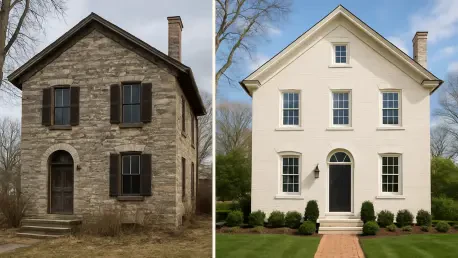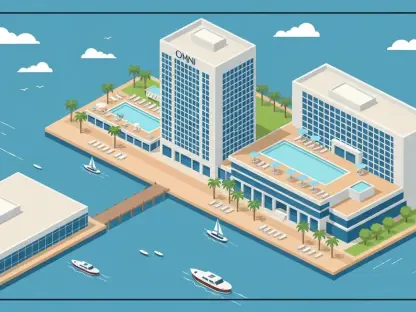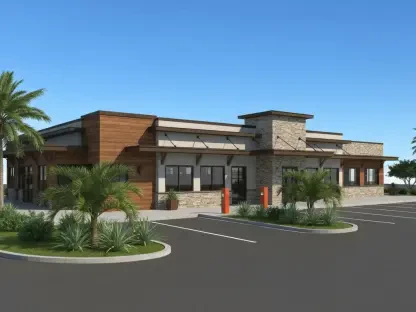In the heart of the American Midwest, historic homes stand as enduring symbols of a bygone era, each brick and beam whispering tales of cultural evolution, architectural innovation, and community heritage. Illinois, with its sprawling landscapes dotted by prairie homesteads, ornate Victorian mansions, and early 20th-century landmarks, holds a treasure trove of such stories. Among these, a distinguished historic home from the late 1800s is poised for a remarkable transformation into a visitor center, supported by a significant preservation grant. This initiative promises not only to safeguard a piece of local history but also to invigorate tourism, enhance educational outreach, and stimulate economic growth in the region. The potential for this property to become a vibrant hub raises questions about the intersection of preservation and modern utility, setting the stage for an exploration of its journey from a private residence to a public asset.
1. Exploring the Legacy of Illinois Historic Homes
Illinois’s architectural heritage paints a vivid picture of settlement and ambition, with historic homes ranging from modest workers’ cottages to grand estates. Styles such as Prairie, often tied to Frank Lloyd Wright’s influence with open layouts and horizontal lines, coexist with Victorian estates boasting intricate towers and stained glass. Italianate villas from the mid-19th century feature arched windows, while Colonial and Federal designs offer symmetrical elegance. These structures are more than mere buildings; they embody the state’s cultural and industrial evolution. With over 2,000 properties listed on the National Register of Historic Places, Illinois stands as a leader in recognizing and preserving its architectural past, providing a foundation for projects that aim to repurpose these landmarks for contemporary use.
The significance of these homes extends beyond aesthetics, serving as tangible links to the lives and aspirations of past generations. They reflect the diversity of communities, from rural farmsteads to urban industrial zones, each with unique stories of triumph and challenge. Preservation efforts in the state highlight a commitment to maintaining this legacy, ensuring that future generations can learn from and appreciate the historical context of their surroundings. As one specific home embarks on a journey toward transformation, it draws on this rich tradition of safeguarding history while adapting to new societal needs, offering a model for balancing heritage with progress.
2. Unveiling the Featured Property’s History
Nestled on a serene, tree-lined avenue, the historic Illinois home at the center of this transformation dates back to the 1890s, showcasing a blend of Victorian and Queen Anne architectural styles. Spanning two acres, it retains original elements like hardwood floors, hand-carved banisters, and stained glass, reflecting the craftsmanship of its era. Once the residence of a prominent civic leader, the property holds deep ties to local history, with its grounds and parlor rooms having hosted community festivals and events over the decades. This connection to the area’s past makes it a cherished landmark, embodying the spirit of a bygone time.
However, recent years have brought challenges, including escalating maintenance costs and the risk of vacancy without a sustainable purpose. The expansive grounds, complete with a historic carriage house and landscaped gardens, require significant upkeep that has strained resources. Community members recall the vibrancy of past gatherings on the lawn, underscoring the urgency to repurpose the space in a way that preserves its legacy while ensuring its viability. The proposed conversion into a visitor center offers a promising solution, aiming to breathe new life into this architectural gem and maintain its relevance for future generations.
3. Understanding the Impact of Preservation Grants
Preservation grants play a pivotal role in rescuing historic properties from decay, providing essential financial support for restoration projects that might otherwise be unfeasible. Funded by state and federal programs, historical societies, or private foundations, these grants cover a wide range of activities, from structural repairs to modern upgrades like HVAC systems and accessibility adaptations. In Illinois alone, over $17 million in such funding has been distributed in the past decade, demonstrating a strong commitment to safeguarding cultural landmarks across the state. For the featured home, a grant is expected to fund 70-80% of the initial rehabilitation costs, making the ambitious transformation possible.
Beyond mere funding, these grants often require community involvement, such as matching funds or volunteer labor, fostering a sense of shared responsibility for historical preservation. They enable detailed work on roofs, foundations, and historical landscaping, ensuring that restorations honor the original design while meeting contemporary standards. The impact of such financial lifelines extends to the broader community, as restored properties often become focal points for education and tourism. This specific grant not only secures the future of a beloved local landmark but also sets a precedent for how strategic funding can transform historical assets into vibrant public spaces.
4. Envisioning a New Role as a Visitor Center
The vision for converting this historic Illinois home into a visitor center focuses on harmonizing preservation with practical modern use, creating a space where history and education intersect. Planned offerings include guided tours led by docents who will highlight the home’s architecture and the stories of its former residents, alongside interactive exhibits on local industries and notable figures. Event spaces for weddings, conferences, and community gatherings are also proposed, alongside educational workshops on topics like restoration techniques. Restored heritage gardens will be open for public enjoyment, enhancing the site’s appeal as a multifaceted destination.
This transformation aims to position the property as both a regional attraction and a hub for community engagement, drawing visitors while serving local needs. The center is expected to host school programs, internships, and lifelong learning opportunities, fostering a deeper understanding of regional history among diverse audiences. By integrating these functions, planners intend to ensure that the home remains a living part of the community rather than a static relic. Such a model could inspire similar projects across the state, demonstrating how historic spaces can adapt to contemporary demands without losing their intrinsic value.
5. Highlighting Economic and Cultural Advantages
Converting historic homes into visitor centers yields substantial benefits for local economies and cultural landscapes, with increased tourism topping the list. Heritage travelers are likely to flock to such a site, boosting visitation numbers and driving revenue to nearby restaurants, shops, and hotels. This influx supports job creation, with full-time and part-time positions emerging to manage operations and events at the center. Illinois’s heritage sites already attract 2.8 million visitors annually, and the addition of a new venue is expected to further enhance seasonal sales and economic activity in the surrounding area.
Culturally, the restoration of landmarks like this home reinforces community pride and identity, reminding residents of their shared history. Educational initiatives, including field trips and docent programs, provide valuable learning experiences for students and visitors alike. These efforts not only preserve physical structures but also sustain intangible heritage through storytelling and engagement. The ripple effects of such projects strengthen local ties and position the state as a leader in cultural tourism, offering a blueprint for how preservation can drive both economic vitality and social cohesion in communities.
6. Mapping Out the Preservation Journey
The process of transforming a historic home into a public venue involves meticulous planning and execution across several key phases. Initially, professionals conduct a thorough assessment to document the property’s condition and identify urgent repair needs. This is followed by the development of detailed restoration plans that balance historical integrity with modern building codes. Funding is then secured through grants, private donations, and municipal support, paving the way for structural work on roofs, foundations, and accessibility upgrades. Each step is crucial to ensure the project’s success within an anticipated timeline of 18 months from start to grand opening.
Subsequent phases focus on restoring original features like woodwork and stained glass using traditional methods, alongside reviving the gardens to reflect historical designs. Staffing and programming come next, with recruitment of personnel and the creation of tour schedules and event offerings. Community input is sought through preview tours and feedback sessions, ensuring public buy-in and early support. This comprehensive approach not only preserves the home’s historical essence but also prepares it for a sustainable future as a visitor center, blending craftsmanship with strategic foresight to meet both preservation and operational goals.
7. Learning from Successful Transformations
Across Illinois, similar preservation projects offer inspiring examples of how historic homes can be revitalized for public benefit. The Galloway Mansion in Springfield, restored through federal grants and local collaboration, now welcomes 10,000 visitors each year and serves as a centerpiece for the city’s heritage festival. Its reopening has led to a 22% increase in foot traffic for downtown businesses, illustrating the economic ripple effects of such initiatives. These success stories highlight the potential for historic properties to become catalysts for community renewal when supported by strategic funding and vision.
Another compelling case is the Prairie School House in northern Illinois, which narrowly escaped demolition before a preservation grant enabled its conversion into a learning center. Today, it supports after-school programs and summer camps for over 300 children annually, demonstrating the educational impact of adaptive reuse. These examples underscore the transformative power of preservation, showing how historic spaces can serve modern purposes while retaining their cultural significance. They provide valuable lessons for the current project, reinforcing the feasibility and far-reaching benefits of turning a historic home into a vibrant community hub.
8. Addressing Challenges in the Conversion Process
Despite the promise of transformation, converting historic homes into visitor centers presents several hurdles that require innovative solutions. Funding gaps remain a primary concern, as preservation is a capital-intensive endeavor; ongoing fundraising events and community contributions are often needed to bridge these gaps. Additionally, retrofitting aging structures for modern accessibility standards, such as ADA compliance, demands careful design to avoid compromising historical elements. These financial and logistical challenges must be navigated with precision to ensure the project’s completion.
Community support is another critical factor, necessitating public awareness campaigns and input forums to build local enthusiasm and backing. Long-term maintenance poses yet another challenge, requiring sustainable revenue streams from ticket sales, memberships, and events to cover upkeep costs. Successful projects often employ creative engagement strategies, such as themed tours, outdoor concerts, and annual festivals, to keep visitors returning. Addressing these obstacles through proactive planning and community involvement will be essential to realizing the full potential of the historic home as a visitor center.
9. Anticipating the Future of Heritage Tourism
Heritage tourism is gaining momentum as travelers increasingly seek authentic, meaningful experiences tied to local culture, positioning Illinois to capitalize on this trend. Innovations like virtual tours, augmented reality exhibits, and QR code displays can enhance visitor learning and accessibility at historic sites. Youth engagement through school partnerships for immersive curricula and history fairs further enriches the educational impact of such centers. These modern approaches ensure that heritage tourism remains relevant and engaging for diverse audiences.
Sustainability is also becoming a priority, with eco-friendly heating, cooling, and stormwater management systems being integrated into restoration efforts. Regional collaboration among historic centers encourages multi-stop travel itineraries, boosting visitation across counties through shared promotions. As these strategies evolve, Illinois strengthens its reputation as a steward of history and a pioneer in cultural tourism. The transformation of individual properties into visitor hubs contributes to a broader network of heritage destinations, promising a dynamic future for the state’s tourism landscape.
10. Reflecting on a Vision Realized
Looking back, the journey of transforming a historic Illinois home into a bustling visitor center marked a profound blend of reverence for history and forward-thinking development, underpinned by a critical preservation grant. This endeavor not only saved a cherished landmark from potential neglect but also redefined its purpose, turning it into a beacon of community pride and a draw for tourists from near and far. The project stood as a testament to the power of strategic funding and collective effort in breathing new life into the past.
Beyond preservation, the initiative underscored Illinois’s dedication to cultural heritage, empowering local communities and inspiring younger generations through tangible connections to history. As the doors of this transformed space opened, they invited exploration, learning, and celebration, ensuring that the legacy of the home endured. Moving forward, stakeholders could focus on expanding educational programs, integrating cutting-edge technology, and fostering regional partnerships to sustain momentum, setting a model for future preservation efforts across the state and beyond.









